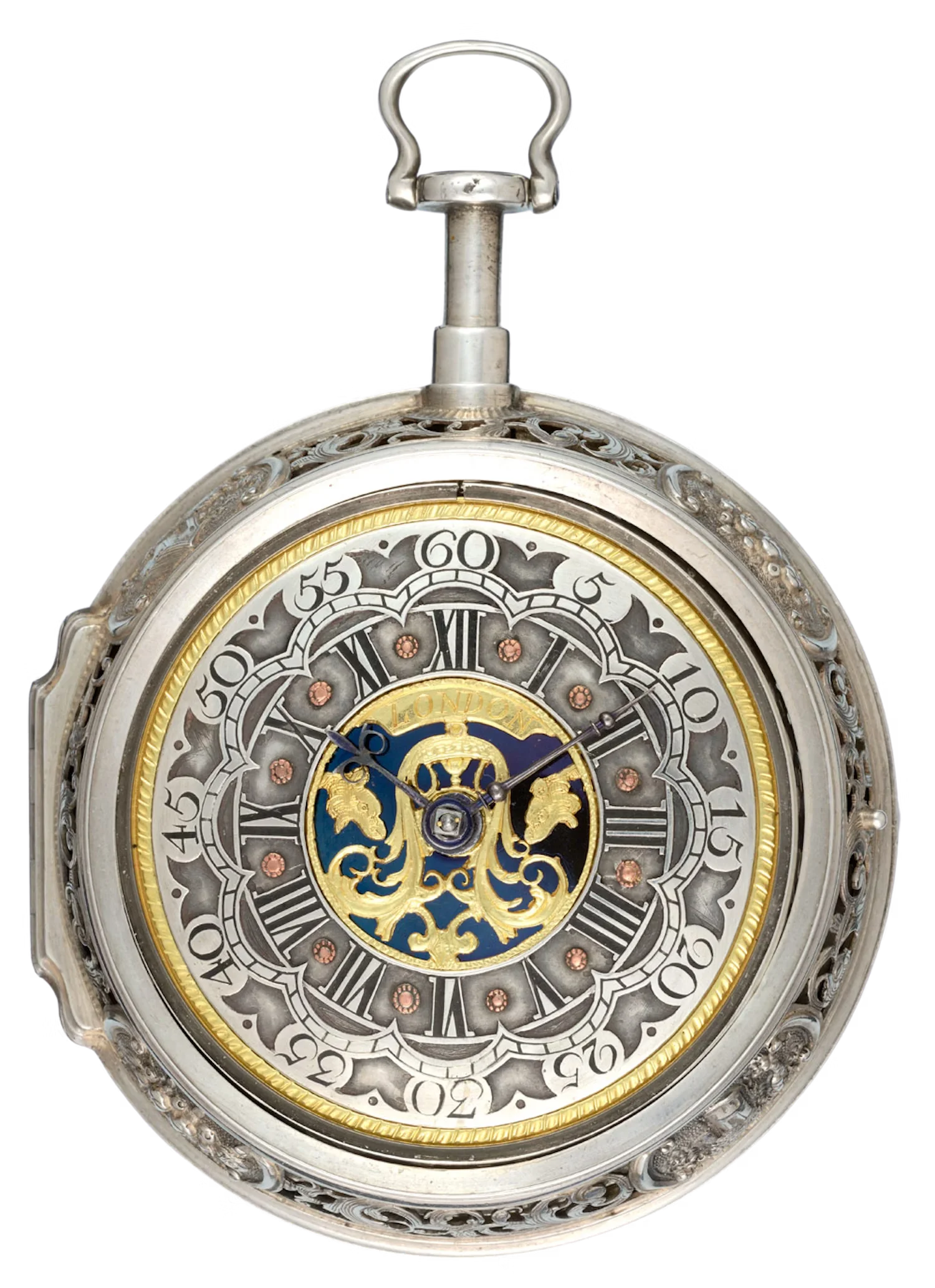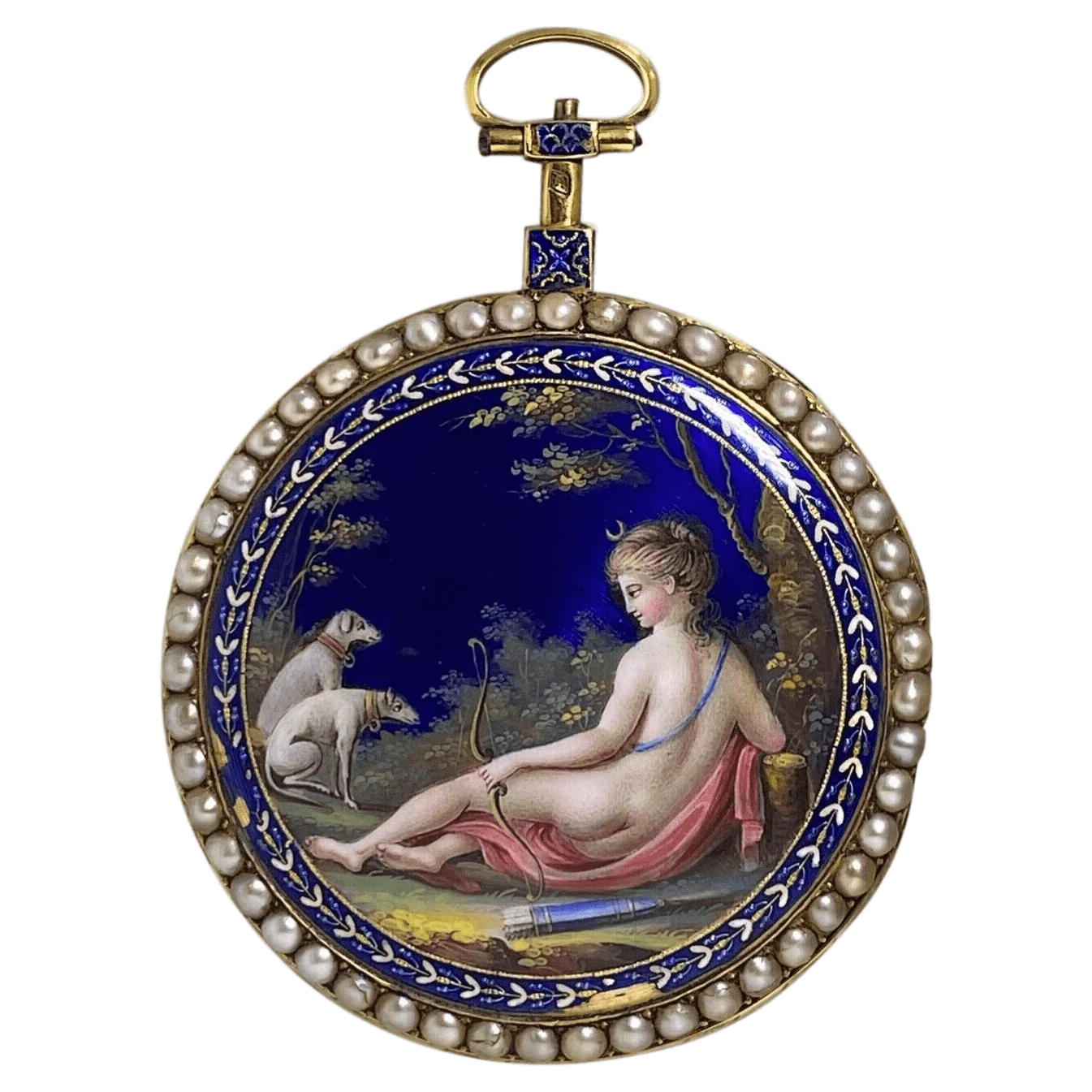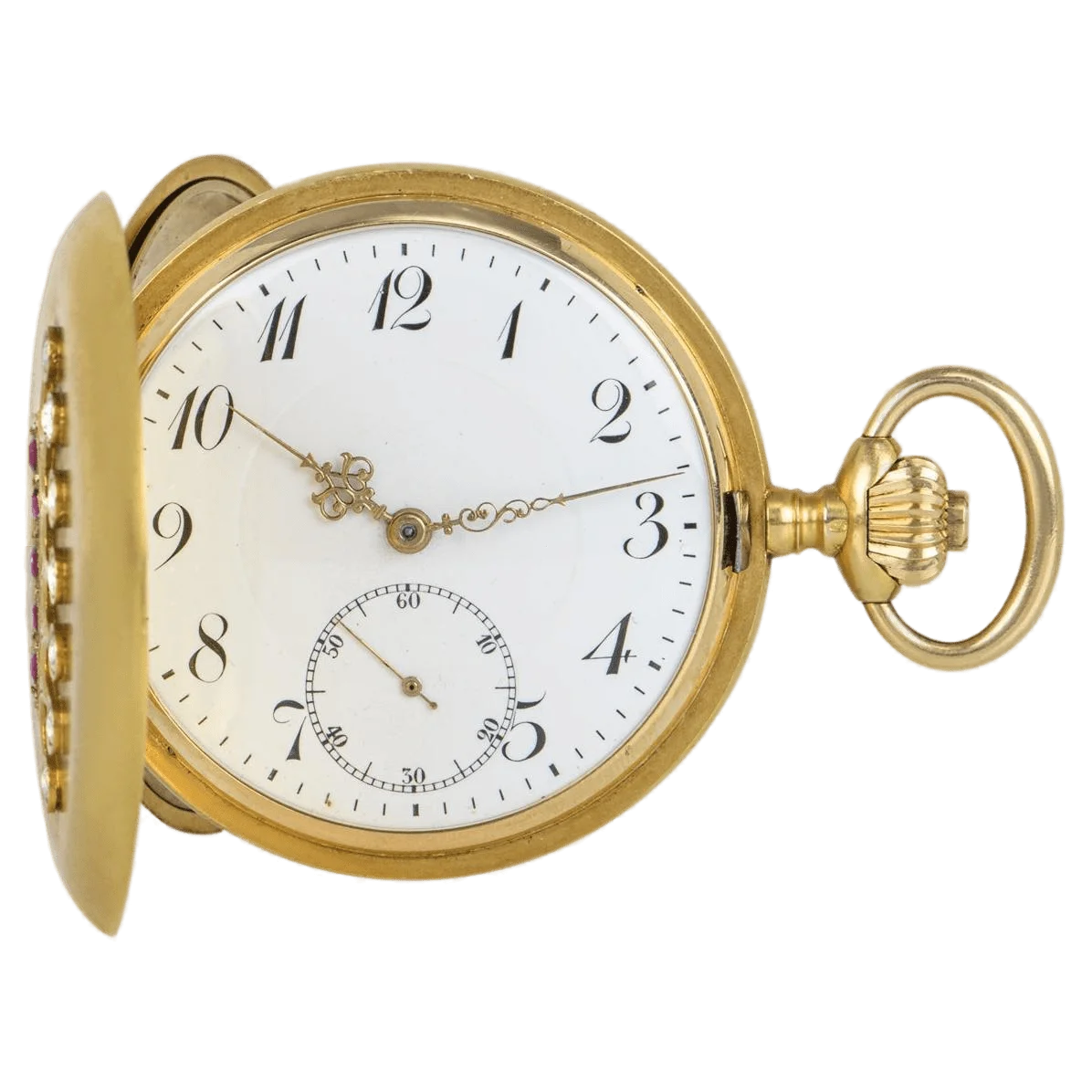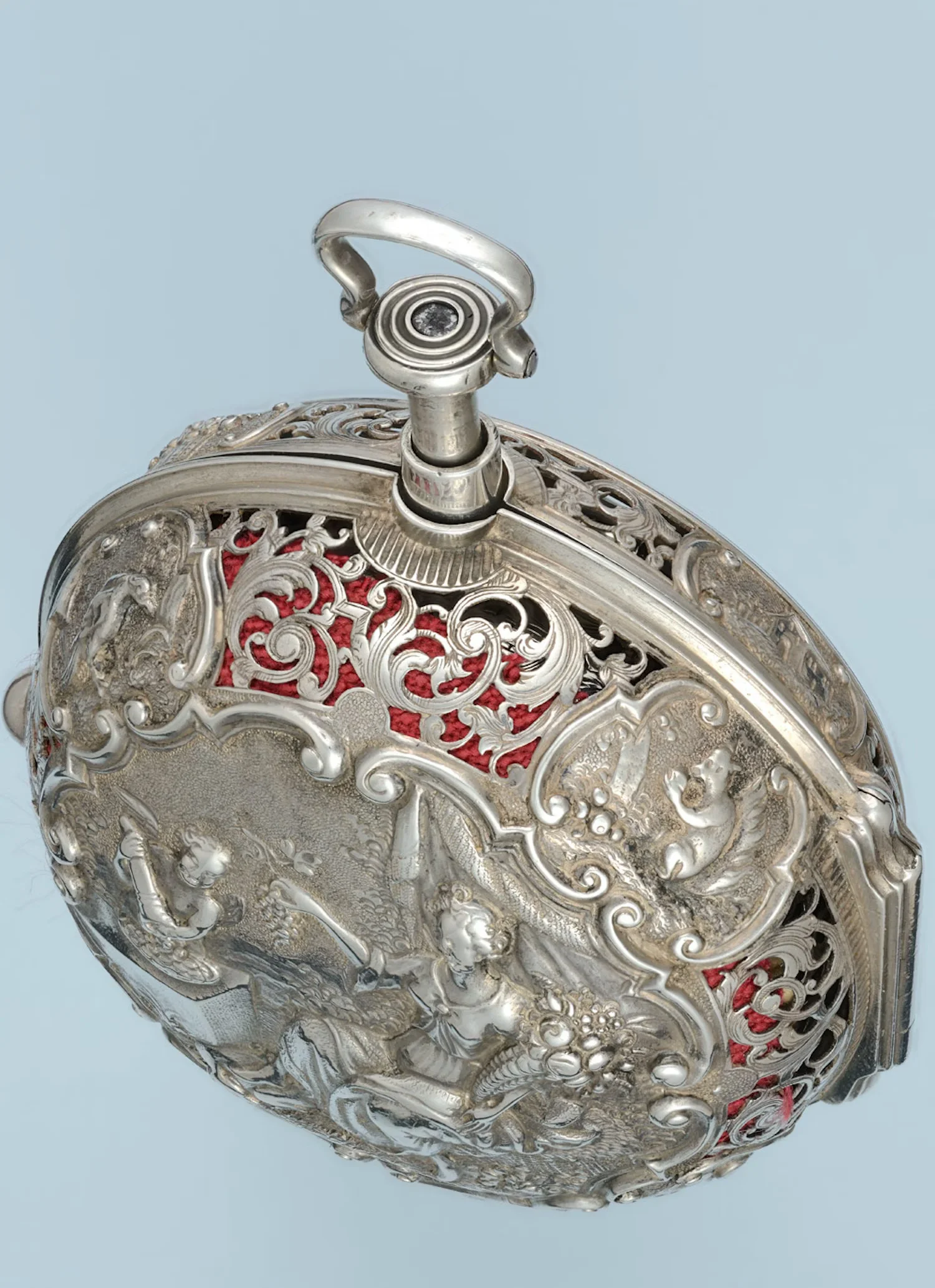EARLY AUTOMATON REPEATER – 1710
Signed Poncet London
Circa 1710
Diameter 56 mm
Depth 18.5 mm
£7,270.00
The EARLY AUTOMATON REPEATER - 1710 is an extraordinary and exceedingly rare example of early 18th-century English horology, embodying the pinnacle of craftsmanship and innovation of its time. This quarter repeating verge watch, signed by the renowned German watchmaker Jean François Poncet, who served the duke of Saxony and the king of Poland, showcases an automated dial with exquisite champlevé work, depicting dragons striking a bell at its center. The full plate fire gilt movement, adorned with turned baluster pillars and a sophisticated fusee and chain mechanism, underscores the intricate engineering behind this timepiece. The watch features a winged cock with a mask, a pierced and engraved foot, a plain steel balance, and a silver regulator disc, all contributing to its remarkable precision and aesthetic appeal. Activated by a push pendant, the quarter repeater chimes on a bell housed within the case, adding an auditory dimension to its visual splendor. The silver inner case is intricately pierced and engraved with foliate scenes of dragons and birds, while the repousse outer case is adorned with a scene of Pomona, the Roman goddess of abundance, along with cartouches featuring a dragon, fish, bird of prey, and a squirrel. Measuring 56 mm in diameter and 18.5 mm in depth, this watch not only predates many continental automaton quarter repeaters by nearly a century but also stands as a testament to the ingenuity and artistry of its era.
This is a very rare and unique early 18th Century English quarter repeating verge watch. The dial is automated with champleve work and features an intricate design of dragons striking a bell in the centre. The full plate fire gilt movement boasts turned baluster pillars and a fusee and chain with worm and wheel barrel setup. The winged cock with mask and pierced and engraved foot, along with the plain steel balance and silver regulator disc, complete this exquisite timepiece. The watch is activated by a push pendant quarter repeating on a bell inside the case. The silver inner case is pierced and engraved with foliate scenes of dragons and birds, while the repousse outer case is chased and engraved with a scene of Pomona, the Roman goddess of abundance. The sculpted sections contain cartouches with images of a dragon, fish, bird of prey, and a squirrel. This watch is signed by Jean François Poncet, a well-known German watchmaker to the duke of Saxony and king of Poland. This watch is truly an exceptional piece and predates many examples of automaton work found on continental quarter repeaters by almost a century. This masterpiece has a diameter of 56 mm and a depth of 18.5 mm.
Signed Poncet London
Circa 1710
Diameter 56 mm
Depth 18.5 mm













